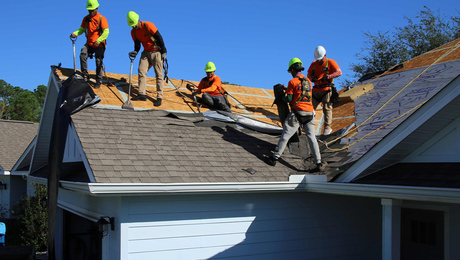permanently flexible grout or options
I’m looking into installing hot water heat in the floor of my old house and looking for a flooring option with great head transfer (like tile) and good flexibility for my bouncy old floor (not tile). Do any of you flooring installers know of a permanently flexible grout or have other suggestions that I should consider?















Replies
Smaller tiles with polymer-modified grout will work. There would be less flexure of each grout line that way. Hydronic floors can be done under engineered wood, you know.
Bill
"Hydronic floors can be done under engineered wood, you know"You're suggesting laminate? I've considered it myself but hesitate over the reduced heat transfer from the underlayment foam. Maybe there's a good fix for that problem. I want my kitchen to stay nice and warm during 2 straight weeks of -35 in January.
I want my kitchen to stay nice and warm during 2 straight weeks of -35 in January.
Floor warming is not the same as room heating.
MikeInsert initially amusing but ultimately annoying catch phrase here.
Not Pergo-type stuff, but engineered wood with a wear layer of actual wood mated to a plywood tongue and groove base portion. The plywood aspect makes these floors more stable than solid hardwood. As for your heating question, I cannot help you there, but an engineer would need to know the room surface area, flooring particulars, wall r-value, all that stuff, before calculating the system specifics.Bill
You don't have to use a different grout for hydronic than you would for any other tile floor. The temperature stresses are greater for a tile floor that gets direct sunlight than they are for a typical hydronic floor, anyway.
Billy
My concern isn't the temperature stress, it's that the floor has a lot of flex under live load. The house is somewhat over 100 years old - before the day when someone said, "you know what, we should really think about using 2x10 instead of 2x6 for these joists."
If you are worried about flex in the floor, grout is not going to save the tile job. You need to make certain that the deflection of your floor is within limits, and if it is not, you need to fix it before you lay tile.
Here's a calculator you can use:http://www.johnbridge.com/vbulletin/deflecto.pl
Billy
"grout is not going to save the tile job"sure it is, if it's permanently flexible, tiles are down with adhesive rather than thinset, and tile size is small. or that's what i'm wondering about anyway. this is my own place, which means I get to experiment with odd solutions. i have clients who ask about this kind of thing and I tell them what you just told me, but here I want to figure out what can be done, not just what ought to or what usually is.
If it's your own place and you're willing to take the risk, then I understand. But it seems like it would be better and easier to do it right. If you want something truly flexible try the Laticrete "Latisil" sealant (not their regular "siliconized latex" caulk). here's a link http://www.laticrete.com/prodsheets/datashts/LDS62001.pdf . They make a sanded silicon version that is not as shiny as the regular silicon stuff. It will take a lot of time and cleanup to do all those joints so they look good, but if it's your place I assume that you have the time...
You should use an isolation membrane such as Ditra.
If you want to stick with grout try Laticrete grout with their 1776 flexible admix that you use instead of water to mix your grout http://www.laticrete.com/prodsheets/datashts/Lds2650.pdf
Eeven if you go with the flexible admix you have to remember that grout is cement based, and you just are not going to have much flexibility with a cement product. It may last for a while but ultimately the flexure will crack the grout, so maybe the silicon caulk will give you the flexibility that you tell us you need.
I strongly suggest that you stay away from mastic on a floor. Instead go with Ditra and a high quality flexible thinset, perhaps using the Laticrete 333 Super Flexible Additive here http://www.laticrete.com/prodsheets/datashts/Lds2660.pdf If you decide to use this above the Ditra I would allow a lot of drying time before you walk on the floor or apply grout -- one to two weeks if you use a large porcelain tile; less with smaller tile or ceramic. As you noted it really would be best if you stay away from large tile in this application.
Go to http://www.johnbridge.com and ask the folks there what they think about your approach. Also, call the technical service numbers for Laticrete or other reputable thinset/grout manufacturers.
Billy
Edited 10/4/2006 9:53 am ET by Billy
Thanks for the details. The general gist I'm getting is that my idea's not such a good one. I'll take it into consideration when I decide how experimental to get. jt
We install staple-up radiant under plain old wood floors all the time. Works great under quartersawn white oak, which is very stable, less good under maple which likes to move. Engineered would probably be even better. 1/16" of foam isn't going to block much heat.